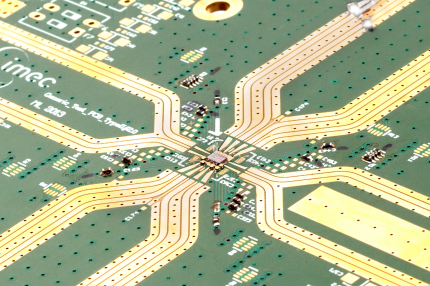Radar-on-a-chip prototype could guide drones
Chip researchers reported an advance in integrating a radar system on a chip that could be used to guide UAVs.

The transceiver chip integrates phase-modulated continuous-wave radar.
Panasonic and the Belgium technology research consortium Imec reported progress recently on integrating a radar system onto a single transceiver chip.
The partners reported during the recent International Solid State Circuits Conference in San Francisco on research focused on development of a transceiver chip for a phase-modulated continuous-wave radar operating at 79 GHz. They claimed the transceiver chip could be used in cheap millimeter-wave radar systems used for "accurate presence and motion detection."
Among the possible applications of the transceiver chip are radar systems for unmanned aerial vehicles (UAVs) and robotics, the partners said.
Millimeter-wave technology is well-suited to blurry conditions such as fog, dust and darkness. It also offers longer range and higher resolution.
Power consumption for the radar chip is measured in the hundreds of milliwatts. Leveraging a wide modulation bandwidth, Imec and Panasonic said the sensor achieved a depth resolution of 7.5 centimeters.
Once commercialized, the transceiver chip could be cranked out using Imec's advanced but low-cost 28-nanometer CMOS manufacturing technology.
The partners are positioning the radar-on-a-chip for automotive radar applications. Potential volumes in the auto market could further reduce the unit cost of producing the devices for other applications like UAVs and robotics.
DoD invested nearly half a billion dollars in the 1990s on a seven-year effort called the Microwave/Millimeter-Wave Monolithic Integrated Circuits program. The MIMIC initiative sought to develop the same types of sensor systems announced by Imec and Panasonic at the chip conference late last month.
NEXT STORY: Navy adds $54.5M modification to C4ISR contract